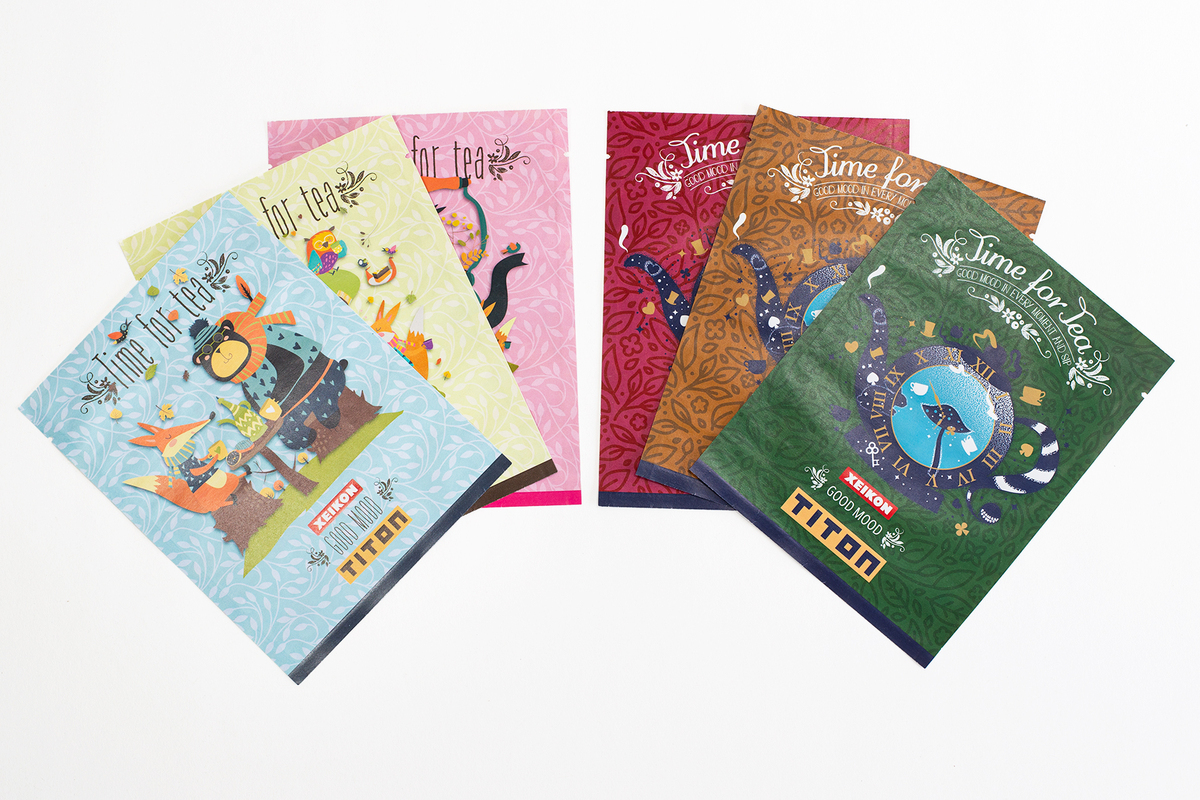Digital printing for flexible packaging: outstanding print image, product safety and recyclability
Sappi, the world’s leading manufacturer of flexible packaging papers with integrated barriers and heat-seal capability, has joined forces with digital printing pioneer Xeikon in a developmental partnership. Sappi’s long-standing expertise in innovative, paper-based packaging solutions and Xeikon’s far-reaching knowledge of cross-sector digital printing applications and innovative ink technology ideally complemented each other in this collaborative venture. Together, the partners took an important step towards direct printing on paper-based materials and perfecting the recyclability of the resulting flexible packaging.
Digital press manufacturer Xeikon, a division of the Flint Group, has over 30 years of expertise in both UV and aqueous inkjet and dry toner technology. With its latest dry toner innovation, TITON and the Xeikon TX500, the company has set its sights on the paper-based flexible packaging market, which, as Xeikon’s collaboration partner Sappi has been reporting for some time,is experiencing strong growth due to demand for resource-saving, recyclable and plastic-free alternatives from end-users as well as brand owners and converters.
TITON meets paper: No additional varnishing or lamination required
Frank Jacobs, Market Intel & Senior Product Manager at Flint Group Digital, understands that the demands made on inks for direct printing on paper-based materials for applications in the flexible packaging sector, e.g. for food packaging, such as those offered by Sappi, are very high: “Over and above ensuring a good print result, the inks need to be extremely resistant throughout the packaging process and insensitive to temperature, e.g. for heat-sealing. And, especially for applications in the food sector, they also need to be odourless, tasteless, food-safe and migration-proof.”
Grounded in the principles of quality, flexibility and sustainability, Xeikon designs, develops and delivers web-fed digital colour presses for label and packaging applications. These printing machines work with different imaging technologies, open workflow software and application-specific consumables and substrates. Each product is designed with careful planning for the best application-based substrate and toner or ink combination to maximize the output.
With TITON, Xeikon is meeting the industry’s need for environmentally friendly and product-safe packaging production: The new toner formulation combines the best features of toners and UV inks, merging the food-safe and odourless properties of dry toner with the special resistance to chemicals and mechanical abrasion of UV inkjet ink. It also withstands temperatures of up to 220-260°C – essential for ensuring packaging integrity and product protection. The most important feature of the new technology is that, thanks to its special formulation, TITON can be used to print directly onto paper-based packaging materials without the need for additional varnishing or lamination to protect the print.
Best results with Seal Silk and AvantGuard S
Of course, an innovative toner such as TITON works best when the substrate used is just as innovative and perfectly matched to the respective application. With this in mind, it only made sense to test the groundbreaking technology with Sappi products. The company has the most extensive portfolio of paper-based packaging solutions on the market. Since the beginning of the collaboration at the end of 2022, extensive tests have revealed two qualities in particular that work especially well with the toner:
“We achieved the best printing results with our innovative functional papers Sappi Seal Silk with a 67 g/m2 basis weight and Sappi AvantGuard S Natural in 75 g/m2 grammage,”
explains Sibylle Hajostek, Market Manager Packaging Solutions at Sappi. “Both papers have an exceptionally high-quality appeal and were developed specifically for the flexible packaging market. The results we achieved in combination with the TITON technology left absolutely nothing to be desired – neither visually nor functionally.” The one-side coated, heat-sealable Seal Silk is recommended for standard flexible packaging in the food and non-food sectors in particular, while the uncoated, heat-sealable AvantGuard S Natural high-barrier paper is equally suitable for various flexible packaging applications in the food and non-food markets.
Frank Jacobs is also delighted with the results: “The print image we created in combination with the Sappi papers was nothing less than phenomenal! Results like these on paper-based substrates can otherwise only be achieved with flexo printing.” The results of the tests with brand owners and converters were so impressive that Xeikon’s customer ACM Plastic in Italy is now permanently producing with Sappi barrier paper. Initial tests are also underway at ACM to put another Sappi quality, AvantGuard S Gloss, through its paces: “It would appear that an engineer at ACM couldn’t wait to test more substrates from Sappi,” Frank Jacobs reports with satisfaction about the customer’s eagerness. “Just like the other two grades, AvantGuard S Gloss has so far shown the best visual and functional results – without primer or varnish. To say the least, it’s very promising. And we’re just at the beginning of this journey!”
Easy recycling in the paper waste stream
The two partners embarked on this journey together – with a single-minded focus on a resource-conserving approach to nature. The use of a primer or varnish, which sometimes required, can have a negative impact on the recyclability of the final packaging. And paper-based substrates in particular usually require a primer when printing with water-based inkjet or UV inkjet technology and liquid toner to ensure satisfactory results. Dry toner technology, on the other hand, usually requires an additional coating for mechanical stability in the further packaging process and often reaches its limits in terms of thermal stability.
Thanks to TITON technology, these additional processing steps are no longer necessary. Combined with Sappi’s recyclable barrier paper-based solutions, complete recycling of the entire packaging in the paper waste stream and subsequent recovery, e.g. for corrugated applications, are easily achieved.
Product safety for brand owners, new business fields for printers and converters
As numerous tests demonstrate, the technology passed all criteria of the Nestlé Standard on Printing Inks for Food Packaging, the EUPIA Exclusion Policy for Printing Inks, the Swiss Ordinance as well as what is known about the German Ink Ordinance and other migration tests with flying colours. This makes the combination of TITON technology and Sappi’s paper-based solution ideal for a wide range of applications with direct or indirect food contact. For example, the two partners have helped brand owners switch to paper-based alternatives for food packaging, such as flexible packaging for baked goods, confectionery, sugar, flour, herbs and spices and tea.
The technology even opens up new business areas for printers and converters: Applications that were previously only possible with conventional flexo presses can now be addressed more quickly and flexibly via digital printing. Xeikon recently introduced the TX500 – a new member of its CHEETAH series – the first digital press to use TITON technology. Furthermore, in combination with paper-based substrates, additional set-up time for coating, laminating and the usual required maintenance can be saved and waste can be prevented.
To find out more about Sappi’s paper-based solutions with integrated functionality, visit the following link: https://www.sappi-psp.com/de/products/functional-paper-packaging



